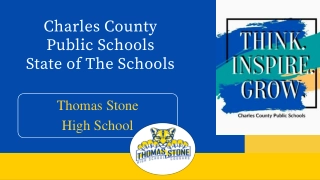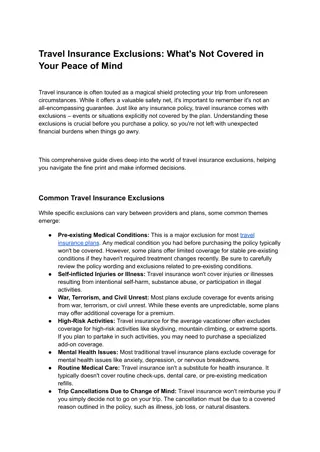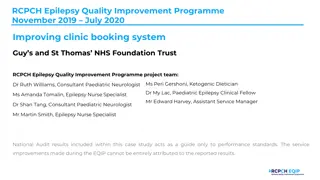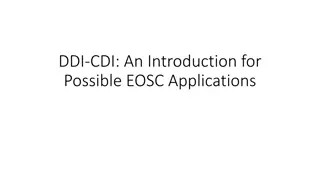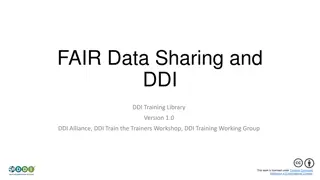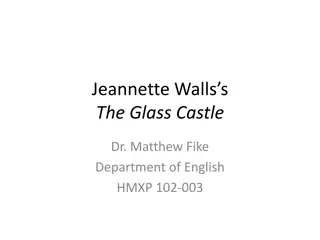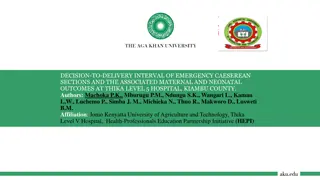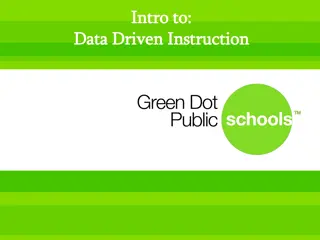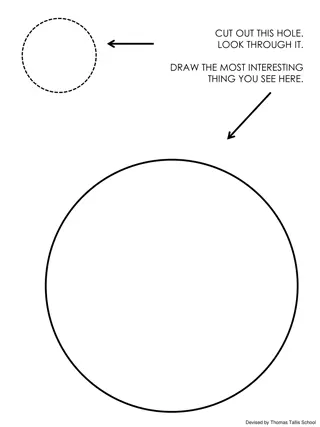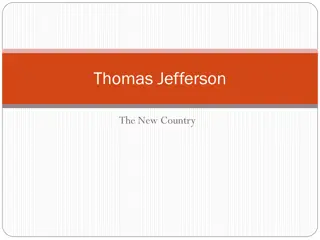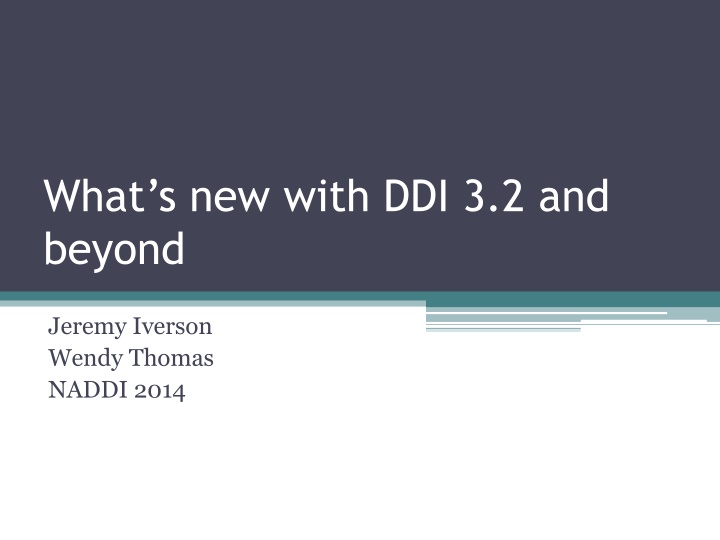
Latest Updates on DDI 3.2 and Beyond
Explore the changes and improvements introduced in DDI 3.2 and beyond, including enhancements for developers, structural improvements, and new content. Learn about managing identification content, handling missing values, and more.
Download Presentation

Please find below an Image/Link to download the presentation.
The content on the website is provided AS IS for your information and personal use only. It may not be sold, licensed, or shared on other websites without obtaining consent from the author. If you encounter any issues during the download, it is possible that the publisher has removed the file from their server.
You are allowed to download the files provided on this website for personal or commercial use, subject to the condition that they are used lawfully. All files are the property of their respective owners.
The content on the website is provided AS IS for your information and personal use only. It may not be sold, licensed, or shared on other websites without obtaining consent from the author.
E N D
Presentation Transcript
Whats new with DDI 3.2 and beyond Jeremy Iverson Wendy Thomas NADDI 2014
Agenda Changes and New Content in 3.2 Changes in content that effect decisions to stay with an earlier DDI version or use 3.2 Improvements for Developers Structural and other improvements that support the work of developers Moving Forward The projects, sprints, activities to date, and where to find the details
Changes in the structure of existing content Bundling language equivalents in a single element Representations and missing values Managing identification content Name clashes New Code Value Types
Changes in the structure of existing content Bundling language equivalents in a single element Make sure multiple language content is complete Note where cardinality has been constrained in 3.2 Loss of Identified Structured String when multiple languages are involved Representations and missing values Managing identification content Name clashes New Code Value Types
Changes in the structure of existing content Bundling language equivalents in a single element Representations and missing values Valid and Invalid (Missing) Values are handled separately in 3.2 and probably into the future Create CodeSchemes that combine a CodeScheme of valid values and a CodeScheme of invalid (missing) values Managed Representations (Numeric, Text, DateTime, ) Managing identification content Name clashes New Code Value Types
Changes in the structure of existing content Bundling language equivalents in a single element Representations and missing values Managing identification content Use URN s! This is the only place where all the content of the full object identification can be expressed for Identifiable and Versionable types Name clashes New Code Value Types
Changes in the structure of existing content Bundling language equivalents in a single element Representations and missing values Managing identification content Name clashes Note where object names are changing (these may be namespace specific) New Code Value Types
Changes in the structure of existing content Bundling language equivalents in a single element Representations and missing values Managing identification content Name clashes New Code Value Types Many attributes were changed to elements to support external controlled vocabularies (CodeValueType) Constrain current content of these fields to values you plan to provide in an external controlled vocabulary
New Content Complex Questionnaires Question Grids and Question Blocks Data Processing New representations and response domains Concept Management Conceptual modeling Managed representations and missing (invalid) values Content Management Quality and authority statements Reorganizing Organizations and Individuals Archiving submitted content Consistency Multilanguage content Geographic content consistency Scheme structure consistency
Complex Questionnaires The primary reason for using 3.2 Complex questionnaires are defined as those using: Complex Question Grids Question Blocks - where a set of questions are related to a specific stimulus item (common in educational testing) Need for a broader set of response domains Scales, capturing a mark on an object, geographic codes, ranking, distribution, etc. Complex routing and reuse of data for calculations Incorporating pre-loaded content Extensive use of response information to inform the content of dynamic text Data validation done during the collection process
Question Grids Simple grids where a single response type such as a Value or Yes/No response is required for each item in a list Complex grids where the list may be provided or entered by the respondent and multiple responses may be required for each item in a list ( Yes/No plus a Value plus a Percent, etc.)
Did you visit any one of the following performances or facilities over the past 12 months? (Circle the correct response for each) Yes Yes Yes Yes Yes No No No No No No No No No No a theatre performance a cabaret performance a concert of classical music an opera or operetta a concert of popular music, pop, jazz, musical or pop opera a 'dance' event, houseparty a ballet performance the cinema an art gallery a museum Yes Yes Yes Yes Yes
14. Please write down the names of the places you stayed overnight and the duration of the stays in chronological order separately. 14. Please write down the names of the places you stayed overnight and the duration of the stays in chronological order separately. Places you stayed overnight in chronological order Type of accommodation for overnight stays (Please specify the number of nights) Other (Please specify) ( ..........) (Cruise, Yacht, Train, TIR) Name of the place (City, town, etc.) Total number of nights relative or friend House of a Camp/ Caravan Rented House In the vehicle Own House And Camp Pension village Youth Motel Hotel 01 02 03 04 05 06 07 08 09 10 11 ...... ............... ................ ......... ......... ......... ......... ...... ........... ......... ......... ......... ........... ..................................... ...... ............... ................ ......... ......... ......... ......... ...... ........... ......... ......... ......... ........... .................................... ...... ............... ................ ......... ......... ......... ......... ...... ........... ......... ......... ......... ........... ..................................... ...... ............... ................ ......... ......... ......... ......... ...... ........... ......... ......... ......... ........... .....................................
Question Blocks Contains Stimulus Material (image, sound, text, etc.) to which a set of questions pertain. The set of specific questions generally make sense only in context of the stimulus material. Commonly used in educational testing Difference between a Question Block and sequence of questions is the need to tightly tie the questions to a specific stimulus material in order to assess the comparability of the question content
New representations/response domains Response domains needed to capture information in specialized situations: Marks on an image or audio/visual Ranking behaviors Controlled distributions Ability to use Geographic Structure and Geographic Location content directly as a specialized code representation Scales as response domains and value representations The actual layout of scales may effect the accuracy of the response
Concept Management DDI is not fully there but 3.2 dramatically improves support for concept management and expression Alignment with GSIM content regarding Concepts, Conceptual Variables, and Represented Variables Managed representations allow numeric, textual, datetime and other representations to be captured once and reused BONUS: managed representations can be mapped for comparison, i.e. a numeric representation of age to a coded set of age cohorts
Concept Universe Conceptual Variable Represented Variable May constrain the Universe and Representation for a specific applied usage Representation Variable
Content Management: Quality Capture information on Quality Frameworks, Quality Standards, and other means of assuring the quality of the data, metadata, and process. Quality statements can be referenced from many levels within DDI Additional content to reflect authorization, legal status, budget, and evaluation procedures have been added
Content Management: Actors/Agents Organization Scheme content has been cleaned up and stripped down Organization and Individual information can be better managed over time (specific contact information is time stamped, etc.) Relationships between any two Organizations and/or Individuals is tracked separately under Relation . Roles are assigned as part of the Relation Locations in DDI where names are associated with specific roles within the context of the Study can now reference an Individual or Organization
Content Management: Archiving Supports inclusion of all major packaging types as submitted (deposited) content (StudyUnit, Group, ResourcePackage) Supports Local Added Content of all packaging types Links Local Added Content to Submitted (Deposited) content by mapping Local Object Reference Depository Object Reference Relationship Action (CodeValueType) i.e. Overides, Deletes, Extends, Restricts, etc. Description
Language Consistency Bundling equivalent content expressed in multiple languages <r:Label xml:lang= en >What is it?</r:Label> <r:Label xml:lang= de >Was ist das?</r:Label> <r:Label> das?</r:String> </r:Label> <r:String xml:lang= en >What is it?</r:String> <r:String xml:lang= de >Was ist
Geographic content consistency Added composite geographies (Metropolitan Areas composite of counties) Improved management of geographic change over time Added ability to use geographic structures (names and codes) and geographic locations (names and codes) directly as representations or response domains Added ability to reference specific locations for the purpose of defining Spatial Coverage
Scheme structure consistency All schemes have the following structural features XxxxSchemeName, Label, Description Inclusion of a scheme by reference Object type included in-line or by reference Object Group included in-line or by reference All schemes have an XxxxGroup to support grouping for administrative or conceptual purposes XxxxGroupName, Label, Description, and TypeOfXxxxGroup Universe and Concept references Subject and Keyword Group and object included by reference
What if Im just starting out? A number of new tools are already available for 3.2 Colectica Rogatus Platform If DDI-C or DDI-L 3.1 does it for you and there are tools to support your work, USE THEM But .pay attention to the consistency changes made in 3.2 to make your work easy to migrate forward. These changes were made in anticipation of future version needs.
Whats New in DDI 3.2 and Beyond NADDI 2014 - Vancouver, Canada
Controversial Thesis DDI 3.2 is Simple DDI 3.2 is Powerful
<ddi:DDIInstance id="ddii1" version="1.0.0" agency="int.example"> <r:Citation> <r:Title xml:lang="en">MyDdiInstance</r:Title> </r:Citation> <g:ResourcePackage id="rp1"> <r:Citation> <r:Title xml:lang="en">MyResourcePackage</r:Title> </r:Citation> <g:Purpose id="purpose1"> <r:Content xml:lang="en">Not specified</r:Content> </g:Purpose> <l:VariableScheme id="varscheme1"> <r:Label xml:lang="en">MyVariableScheme</r:Label> <l:Variable id="var1"> <l:VariableName xml:lang="en">age</l:VariableName> <r:Label xml:lang="en">Age of the respondent</r:Label> <l:Representation> <l:NumericRepresentation type="Integer" /> </l:Representation> </l:Variable> </l:VariableScheme> </g:ResourcePackage> </ddi:DDIInstance>
<ddi:DDIInstance id="ddii1" version="1.0.0" agency="int.example"> <r:Citation> <r:Title xml:lang="en">MyDdiInstance</r:Title> </r:Citation> <g:ResourcePackage id="rp1"> <r:Citation> <r:Title xml:lang="en">MyResourcePackage</r:Title> </r:Citation> <g:Purpose id="purpose1"> <r:Content xml:lang="en">Not specified</r:Content> </g:Purpose> <l:VariableScheme id="varscheme1"> <r:Label xml:lang="en">MyVariableScheme</r:Label> <l:Variable id="var1"> <l:VariableName xml:lang="en">age</l:VariableName> <r:Label xml:lang="en">Age of the respondent</r:Label> <l:Representation> <l:NumericRepresentation type="Integer" /> </l:Representation> </l:Variable> </l:VariableScheme> </g:ResourcePackage> </ddi:DDIInstance>
<Fragment> <Variable> <URN>urn:ddi:int.example:var1:1</URN> <Agency>int.example</Agency> <ID>var1</ID> <Version>1</Version> <VariableName> <String xml:lang="en">age</String> </VariableName> <Label> <Content xml:lang="en">Age of the respondent</Content> </Label> <VariableRepresentation> <NumericRepresentation> <NumericTypeCode>Integer</NumericTypeCode> </NumericRepresentation> </VariableRepresentation> </Variable> </Fragment>
The DDI 3.1 Way <ddi:DDIInstance id="ddii1" version="1.0.0" agency="example.org"> <r:Citation> <r:Title xml:lang="en">MyDdiInstance</r:Title> </r:Citation> <g:ResourcePackage id="rp1"> <r:Citation> <r:Title xml:lang="en">MyResourcePackage</r:Title> </r:Citation> <g:Purpose id="purpose1"> <r:Content xml:lang="en">Not specified</r:Content> </g:Purpose> <l:VariableScheme id="varscheme1"> <r:Label xml:lang="en">MyVariableScheme</r:Label> <l:Variable id="var1"> <l:VariableName xml:lang="en">age</l:VariableName> <r:Label xml:lang="en">Age of the respondent</r:Label> <l:Representation> <l:NumericRepresentation type="Integer" /> </l:Representation> </l:Variable> </l:VariableScheme> </g:ResourcePackage> </ddi:DDIInstance>
The DDI 3.2 Way <Fragment> <Variable> <URN>urn:ddi:int.example:var1:1</URN> <Agency>int.example</Agency> <ID>var1</ID> <Version>1</Version> <VariableName> <String xml:lang="en">age</String> </VariableName> <Label> <Content xml:lang="en">Age of the respondent</Content> </Label> <VariableRepresentation> <NumericRepresentation> <NumericTypeCode>Integer</NumericTypeCode> </NumericRepresentation> </VariableRepresentation> </Variable> </Fragment>
DDI 3.2: Focus on the Content Study Survey Data DataCollection Group PhysicalInstance Instrument StudyUnit DataRelationship ControlConstructs Quality Variable Question Foundational Concept CodeList Universe CategoryList Organization Category
Overview Schemas Simplified packaging Clearer identification More consistency Bug fixes Content Data Collection Instruments Harmonization Groups Data
Simplified Packaging New DDI Fragment allows simple listing of DDI items Web services can be item-specific Useful for import and export
Ambiguous Location of Information Where are Variables defined? <DDIInstance> <Group> <LogicalProduct> <VariableScheme> <Variable /> </VariableScheme> </LogicalProduct> </Group> </DDIInstance> <StudyUnit> <LogicalProduct> <VariableScheme> <Variable /> </VariableScheme> </LogicalProduct> </StudyUnit> </Group> </DDIInstance> <DDIInstance> <StudyUnit> <LogicalProduct> <VariableScheme> <Variable /> </VariableScheme> </LogicalProduct> </StudyUnit> </DDIInstance> <DDIInstance> <ResourcePackage> <VariableScheme> <Variable /> </VariableScheme> </ResourcePackage> </DDIInstance> <DDIInstance> <Group> <StudyUnit> </StudyUnit> <DDIInstance> <Group> <StudyUnit> <LogicalProduct> <VariableScheme> <Variable /> </VariableScheme> </LogicalProduct> </StudyUnit> </Group> </DDIInstance> <DDIInstance> <ResourcePackage> <LogicalProduct> <VariableScheme> <Variable /> </VariableScheme> </LogicalProduct> </ResourcePackage> </DDIInstance>
Consistent Location of Information <FragmentInstance> <Fragment> <Variable /> </Fragment> </FragmentInstance>
Explicit Top Level Element <FragmentInstance> <TopLevelReference> <!-- Points to the PhysicalInstance--> </TopLevelReference> <Fragment> <PhysicalInstance /> </Fragment> <Fragment> <Variable /> </Fragment> <Fragment> <Variable /> </Fragment> <Fragment> <Category /> </Fragment> <Fragment> <Category /> </Fragment> ... </FragmentInstance>
Clearer identification DDI items are identified using three pieces that create a key Agency Name Item Identifier Item Version Item Identifier should be unique Recommend using UUID No more containership rules
Consistency DDI items can be used by reference everywhere they are used Most previously required elements are now optional DDI schemes all look similar Cleanup Spelling mistakes Repeated use of the same element names for different uses

